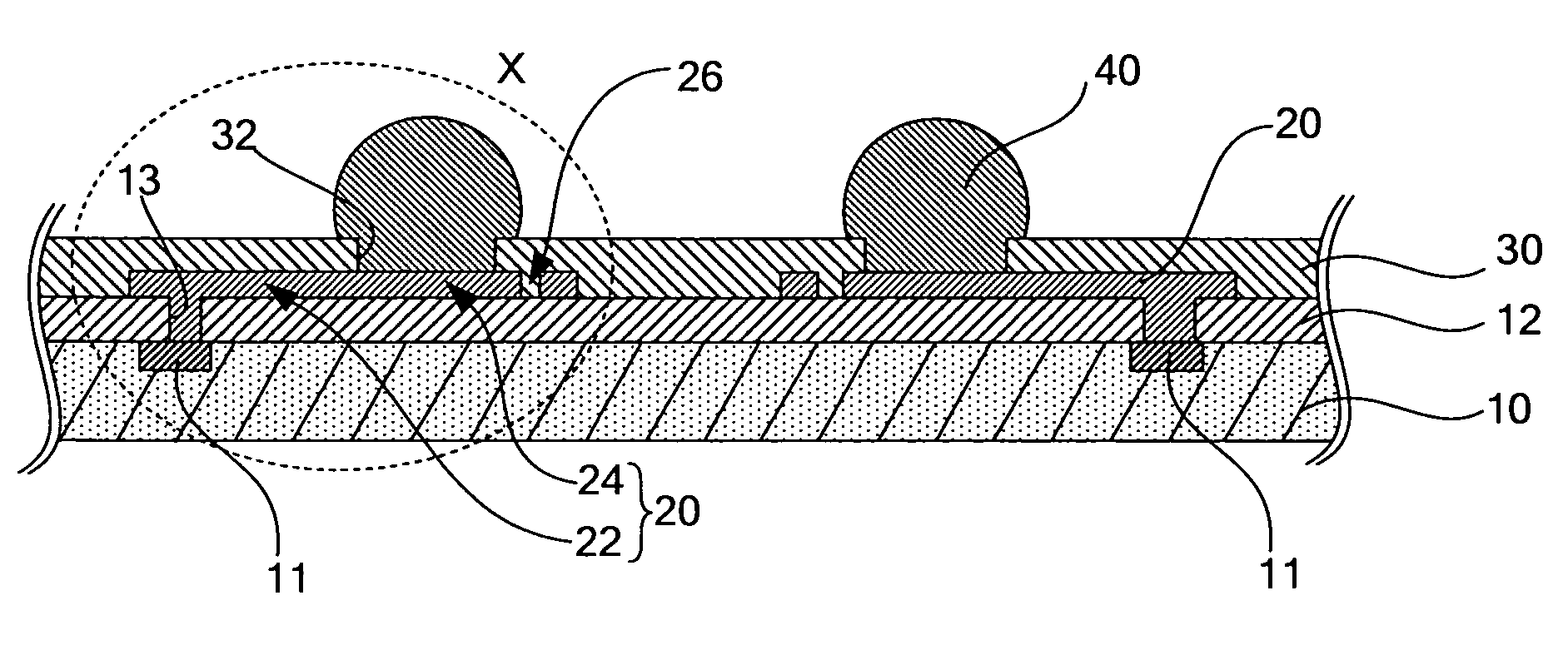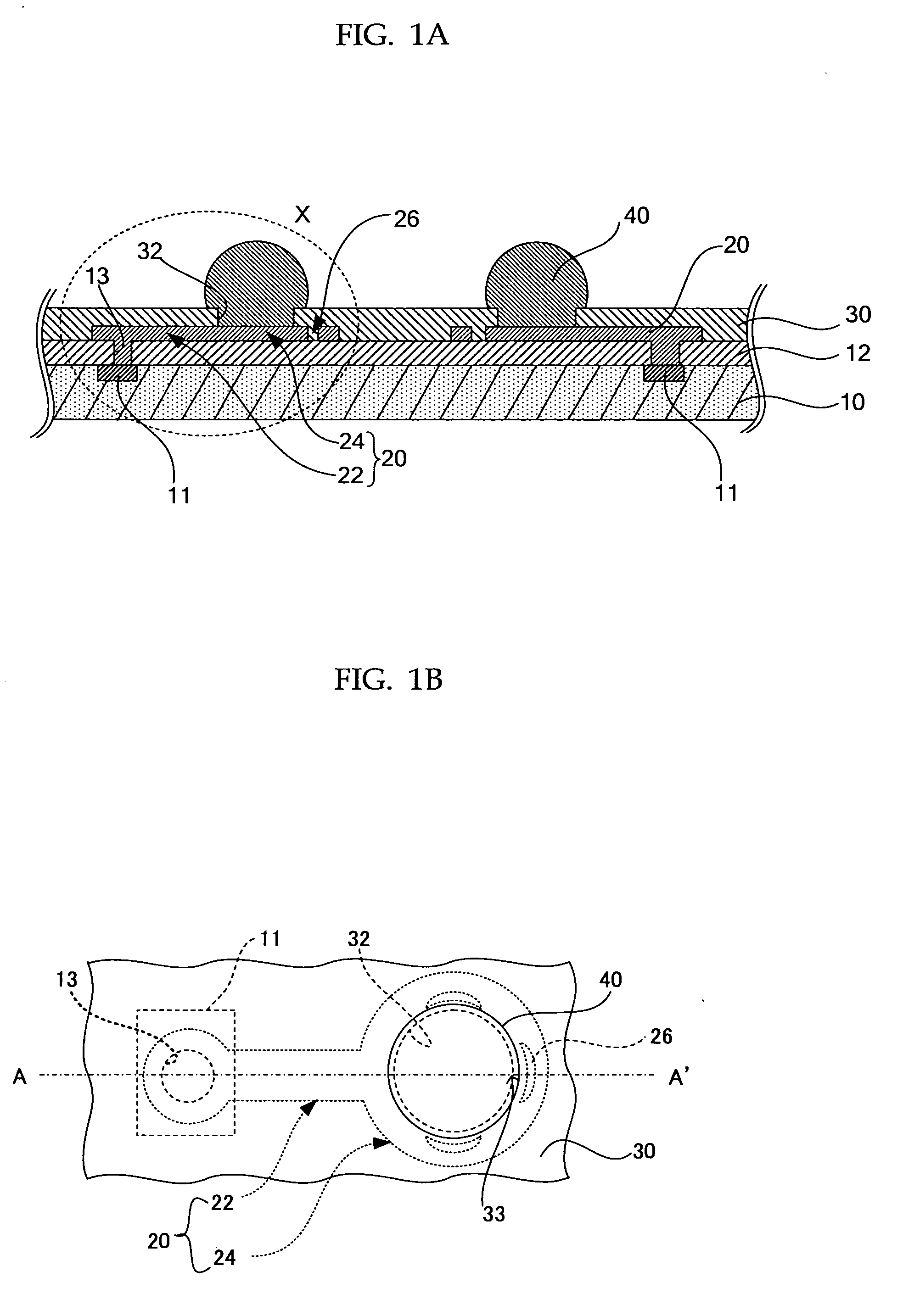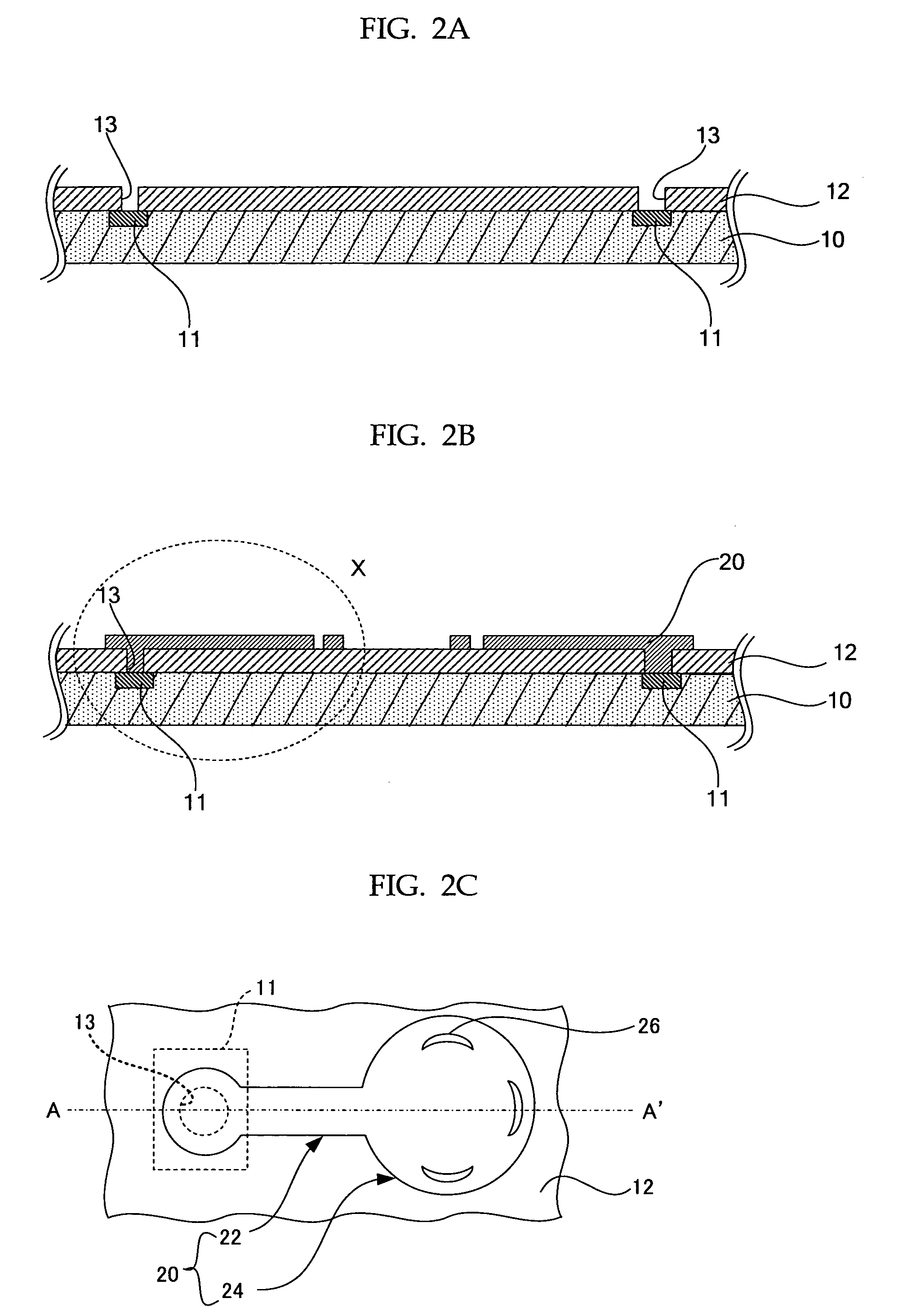Semiconductor device and manufacturing method for the same
a technology of semiconductor devices and manufacturing methods, applied in semiconductor devices, semiconductor/solid-state device details, electrical apparatus, etc., can solve the problems of poor adhesion between different components, narrow pitch between adjacent external terminals, and peeling of the end of resin film, etc., to achieve low compatibility, high compatibility, and high performance and reliability.
- Summary
- Abstract
- Description
- Claims
- Application Information
AI Technical Summary
Benefits of technology
Problems solved by technology
Method used
Image
Examples
example 1
[0035] The First Example of the semiconductor device of the present invention is shown in FIGS. 1A and 1B. FIG. 1A is a cross-sectional view taken along A-A′ line of FIG. 1B, and FIG. 1B is a top view of “X” portion encircled by dotted line of FIG. 1A.
[0036] In the semiconductor device shown in FIG. 1A, an insulating film 12 made of, for example, polyimide resin, is formed on a silicon wafer 10 which has Al pads 11 and serves as the foregoing semiconductor substrate. The insulating film 12 is placed in such a way as to avoid spaces above the Al pads 11, where connection holes 13 are to be provided.
[0037] A conductive layer (or interconnection) 20 made of copper is provided on the surface of the insulating film 12, filling the connection holes 13. The Al pad 11 and conductive layer 20 are bonded together via the connection hole 13. The conductive layer 20 is formed of an interconnection part 22 and a land part 24. As shown in FIG. 1B, three through holes 26 passing through the cond...
example 2
[0062] The Second Example of the semiconductor device of the present invention is shown in FIGS. 4A and 4B. In each drawing the upper side shows the top view of the semiconductor device and the lower side shows the cross-sectional view taken along B-B′ line of the top view.
[0063] In the semiconductor device shown in FIG. 4A, there are provided four through holes 26 which are arranged substantially at equal distances from the end of the exposing opening (i.e., the end 33 of the resin film opening 32) present at least above a part of the conductive layer 20 within the land part 24, and are substantially equally spaced from one another.
[0064] Note that upon manufacturing of the semiconductor device shown in FIG. 4A, in the conductive layer formation step described above, the four through holes are formed in the conductive layer 20 in such a way that their shape, viewed from above the silicon wafer 10 horizontally divided, shows a substantially identical crescent shape and that their ...
example 3
[0065] The Third Example of the semiconductor device of the present invention is shown in FIG. 5. FIG. 5 is a top view of a land part of the semiconductor device, showing the arrangement of through holes provided above the land part.
[0066] In Example 3 there are provided eight through holes 27 passing through the conductive layer 20, as shown in FIG. 5. The eight through holes 27 have substantially identical circular shapes when viewed from above the silicon wafer 10 horizontally divided, and their size is also substantially identical. Moreover, the eight through holes 27 are arranged substantially at equal distances from the end of the exposing opening (or the end 33 of the resin film opening 32) present at least above a part of the conductive layer 20 within the land 24 part, and are also substantially equally spaced from one another.
[0067] As described above, since the eight through holes 27 are symmetrical about the center of the land part 24 in Example 3, the portions where t...
PUM
 Login to View More
Login to View More Abstract
Description
Claims
Application Information
 Login to View More
Login to View More - R&D
- Intellectual Property
- Life Sciences
- Materials
- Tech Scout
- Unparalleled Data Quality
- Higher Quality Content
- 60% Fewer Hallucinations
Browse by: Latest US Patents, China's latest patents, Technical Efficacy Thesaurus, Application Domain, Technology Topic, Popular Technical Reports.
© 2025 PatSnap. All rights reserved.Legal|Privacy policy|Modern Slavery Act Transparency Statement|Sitemap|About US| Contact US: help@patsnap.com



